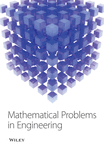Analysis of Complex Networks via Some Novel Topological Indices
Abstract
Chemical graph theory is a field of mathematical chemistry that links mathematics, chemistry, and graph theory to solve chemistry-related issues quantitatively. Mathematical chemistry is an area of mathematics that employs mathematical methods to tackle chemical-related problems. A graphical representation of chemical molecules, known as the molecular graph of the chemical substance, is one of these tools. A topological index (TI) is a mathematical function that assigns a numerical value to a (molecular) graph and predicts many physical, chemical, biological, thermodynamical, and structural features of that network. In this work, we calculate a new topological index namely, the Sombor index, the Super Sombor index, and its reduced version for chemical networks. We also plot our computed results to examine how they were affected by the parameters involved. This document lists the distinct degrees and degree sums of enhanced mesh network, triangular mesh network, star of silicate network, and rhenium trioxide lattice. The edge partitions of these families of networks are tabled which depend on the sum of degrees of end vertices and the sum of the degree-based edges. These edge partitions are used to find closed formulae for numerous degree-based topological indices of the networks.
1. Introduction
In mathematics, the graph is an abstract structure formed by set of end points called nodes or vertices V (G) which are joined by a set of lines called edges E(G). The order and size of a graph is the total number of vertices and total number of edges of the graph G, respectively. In the theory of graphs, we usually analyze the chemical structures that appeared in different branches of chemistry.
Mathematical chemistry is the branch of mathematics in which mathematical tools are used to solve the problems arising in chemistry. One of these tools is a graphical representation of chemical compounds and this representation is known as the molecular graph of the concerned chemical compound [1, 2]. A topological index (TI) is a mathematical function that assigns a numerical value to a (molecular) graph and predicts many physical, chemical, biological, thermodynamical, and structural features of that network. A topological index is a molecular graph invariant that links the physicochemical features of a molecular graph with a number in the fields of chemical graph theory, molecular topology and mathematical chemistry [3]. Chemical graphs are graphs in which the vertices and edges represent the atoms and bonds of a chemical molecule. The vertices and edges are identified according to the atoms and types of bonds they represent [4, 5]. Topological invariants of a molecular graph can be used to learn about a chemical structure and its hidden properties without having to conduct experiments [6, 7]. Distance, degree, and eccentricity are the three major topological indices. Among them, degree-based indices have much importance and can be used as a tool for chemists [8]. Distance-based topological indices are concerned with graph distances, degree-based topological indices are concerned with the concept of degree, and counting-based topological indices are concerned with the counting of edges [9]. Topological indices have a wide range of applications in material science, math, informatics, biology, and other fields [10, 11]. The structure of the chemical graph is connected to topological indices [12, 13]. Physical and chemical features of the underlying molecule that can be determined from the TIs include heat of evaporation, heat of creation, boiling point, chromatographic retention, surface tension, and vapor pressure [14, 15].
We compute SO(G), SOred, SSO(G) and SSOred(G) indices for certain chemical networks, as well as their graphical representations, in this study.
2. Enhanced Mesh
The degree-based topological descriptors of enhanced mesh networks are examined in this section. Also, the graphical comparison of SO, SOred, SSO, and SSOred indices is depicted in Figure 1.
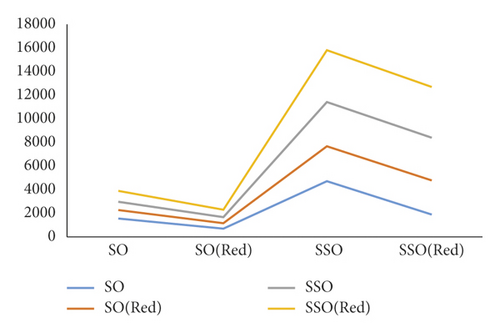
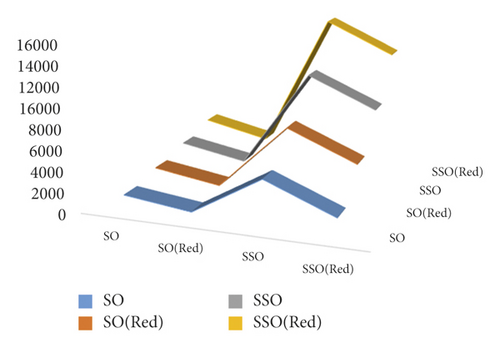
2.1. Construction
is the edge set. Now, enhanced mesh is the result by replacing each 4-cycle of by a wheel W4 which has 4 vertices. As a result, a wheel W4 is a graph obtained by connecting the central vertex of cycle C4 to each vertex of cycle C4. A new vertex is the hub (central vertex) of W4. Let the collection of all hub (central) vertices be hij, 1 ≤ i ≤ s − 1,1 ≤ j ≤ t − 1. The graph of enhanced mesh is shown in Figure 2.
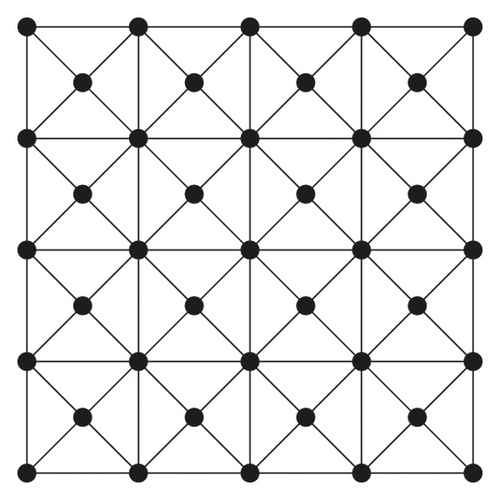
Theorem 1. SO and SOred indices for the enhanced mesh network are as follows:
- (i)
SO(G) = 82.7475 + 73.6081s − 69.4994t + 58.4045st
- (ii)
SOred(G) = 78.4639 − 62.9848(s + t) + 50.2618st
Proof. From the edge partitioning of enhanced mesh network given in Table 1, we have the following computations for SO and SOred indices:
| ϕ | Frequency | |
|---|---|---|
| ϕ1 | ϕ(3,4) | 4 |
| ϕ2 | ϕ(3,5) | 8 |
| ϕ3 | ϕ(4,5) | 4(s + t − 4) |
| ϕ4 | ϕ(4,8) | 4(st − 2s − 2t + 4) |
| ϕ4 | ϕ(5,5) | 2(s + t − 6) |
| ϕ4 | ϕ(5,8) | 2(s + t − 4) |
| ϕ5 | ϕ(8,8) | (2st − 5s − 5t + 12) |
Theorem 2. SSO and SSOred indices for the enhanced mesh network are as follows:
- (i)
SSO(G) = 726.3922 − 521.7772(s + t) + 366.5203st
- (ii)
SSOred(G) = −1855.5167 − 522.7773(s + t) + 358.147st
Proof. From the edge partitioning of enhanced mesh network given in Table 2, we have the following computations for SSO and SSOred indices:
| ϕ | Frequency | |
|---|---|---|
| ϕ1 | ϕ(14,21) | 4 |
| ϕ2 | ϕ(14,24) | 8 |
| ϕ3 | ϕ(21,24) | 8 |
| ϕ4 | ϕ(21,42) | 4 |
| ϕ5 | ϕ(24,26) | 16 |
| ϕ6 | ϕ(24,42) | 8 |
| ϕ7 | ϕ(26,26) | 2(3s + 3t − 26) |
| ϕ8 | ϕ(26,42) | 8 |
| ϕ9 | ϕ(26,45) | 6(s + t − 8) |
| ϕ10 | ϕ(32,42) | 4 |
| ϕ11 | ϕ(32,45) | 4(s + t − 8) |
| ϕ12 | ϕ(32,48) | 4(st − 4s − 4t + 16) |
| ϕ13 | ϕ(42,45) | 8 |
| ϕ14 | ϕ(45,45) | 2(s + t − 10) |
| ϕ15 | ϕ(45,48) | 2(s + t − 8) |
| ϕ16 | ϕ(48,48) | (2st − 9s − 9t + 40) |
3. Triangular Mesh
In the present section, we examined degree-based topological descriptors of the triangular mesh network. Also, the graphical comparison of SO, SOred, SSO, and SSOred indices is depicted in Figure 3.

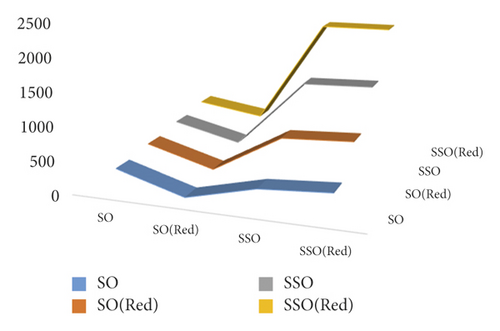
3.1. Construction

Theorem 3. SO and SOred indices for the triangular mesh network are as follows:
- (i)
SO(G) = 155.4646 + 41.1213t + 2.7279t2
- (ii)
SOred(G) = 153.7212 − 110.7795t + 21.213t2
Proof. From the edge partitioning of triangular the mesh network given in Table 3, we have the following computations for SO and SOred indices:
| ϕ | Frequency | |
|---|---|---|
| ϕ1 | ϕ(2,4) | 6 |
| ϕ2 | ϕ(4,4) | 3(t − 2) |
| ϕ3 | ϕ(4,6) | 6(t − 3) |
| ϕ4 | ϕ(6,6) | (3(t2 − 7t + 12)/2) |
Theorem 4. SSO and SSOred indices for the triangular mesh network are as follows:
- (i)
SSO(G) = 122.2908 − 256.8792t + 76.3675t2
- (ii)
SSOred(G) = 222 − 254.3856t + 74.2462t2
Proof. From the edge partitioning of triangular mesh network given in Table 4, we have the following computations for SSO and SSOred indices:
| ϕ | Frequency | |
|---|---|---|
| ϕ1 | ϕ(8,16) | 6 |
| ϕ2 | ϕ(16,16) | 3 |
| ϕ3 | ϕ(16,20) | 6 |
| ϕ4 | ϕ(16,28) | 6 |
| ϕ5 | ϕ(20,20) | 3(t − 5) |
| ϕ6 | ϕ(20,28) | 6 |
| ϕ7 | ϕ(20,32) | 6(t − 5) |
| ϕ8 | ϕ(28,32) | 6 |
| ϕ9 | ϕ(32,32) | 3(t − 5) |
| ϕ10 | ϕ(32,36) | 6(t − 6) |
| ϕ11 | ϕ(36,36) | (3(t2 − 13t + 42)/2) |
4. Star of the Silicate Network
This section contains the analysis of degree-based topological descriptors for the star of the silicate network. Also, the graphical comparison of SO, SOred, SSO, and SSOred indices is depicted in Figure 5.
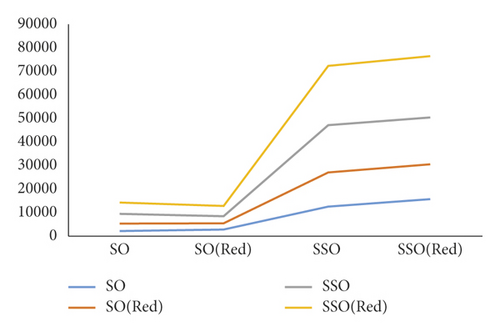
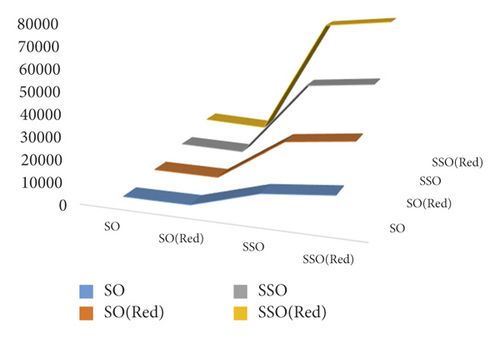
4.1. Construction
-
Step 1: Create an H-dimensional star of the David graph (Figure 6).
-
Step 2: To divide H into 2t 1 edges, apply 2t − 2 vertices to each edge.
-
Step 3:Excluding the pairings at a distance of 1, 3, 5, 7, …, (6t − 1) from one corner vertex, join any two vertices u and v by an edge in such a way that the first is the complete reflection of the second one, the distance between them is odd from one corner vertices (2t − 1).
-
Step 4: Except for the pairings at a distance, join every two vertices u and v with the help of an edge if one is the mirror image of the other and they are at an odd distance 1, 3, 5, 7, …, (6t − 1) from one corner vertices (2t − 1).
-
Step 5: A tetrahedron is used to replace each K3 subgraph. SSL denotes the t-dimensional star silicate star, also known as the star of silicate network star (t). Figure 7 depicts the graph for the SSL(2) silicate network star.
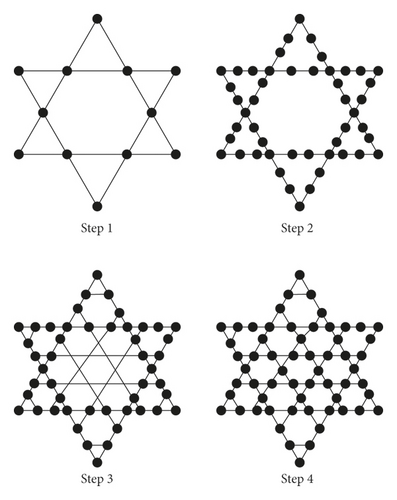
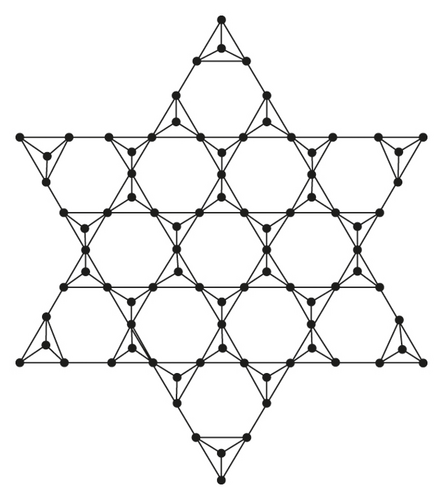
Here, G denotes the star silicate network SSL(t). Each tetrahedron has 6 corner vertices and a central vertex of degree 3 in G. The vertices that were added in the second step have degree four. The remaining vertices are all of degree 6. Thus, for u ∈ V(SSL(t)), the degrees du are 3, 4, and 6. The edge partitioning of G is shown in the table below.
Theorem 5. SO and SOred indices for the star of a silicate network are as follows:
- (i)
SO(G) = 291.4702 − 930.7296t + 546.9624t2
- (ii)
SOred(G) = 279.5208 − 583.2501t + 448.4238t2
Proof. From the edge partitioning of the star silicate network given in Table 5, we have the following computations for SO and SOred indices:
| ϕ | Frequency | |
|---|---|---|
| ϕ1 | ϕ(3,3) | 6 |
| ϕ2 | ϕ(3,4) | 12(2t − 1) |
| ϕ3 | ϕ(3,6) | (36t2 − 60t + 36) |
| ϕ4 | ϕ(4,4) | (24t − 30) |
| ϕ5 | ϕ(4,6) | 24(t − 1) |
| ϕ6 | ϕ(6,6) | (36t2 − 72t + 48) |
Theorem 6. SSO and SSOred indices for the star of a silicate network are as follows:
- (i)
SSO(G) = 115.4495 − 3998.9124t + 2679.807t2
- (ii)
SSOred(G) = 1299.4434 − 2964n + 2579.3676t2
Proof. From the edge partitioning of the star silicate network given in Table 6, we have the following computations for SSO and SSOred indices:
| ϕ | Frequency | |
|---|---|---|
| ϕ1 | ϕ(11,11) | 6 |
| ϕ2 | ϕ(11,14) | 24 |
| ϕ3 | ϕ(14,14) | 6 |
| ϕ4 | ϕ(14,17) | (24t − 36) |
| ϕ5 | ϕ(14,26) | (12t − 24) |
| ϕ6 | ϕ(16,19) | 12 |
| ϕ7 | ϕ(16,26) | 12 |
| ϕ8 | ϕ(16,28) | 12 |
| ϕ9 | ϕ(17,17) | (24n − 60) |
| ϕ10 | ϕ(17,19) | 12 |
| ϕ11 | ϕ(17,26) | (24t − 48) |
| ϕ12 | ϕ(18,26) | (12t2 − 48n + 48) |
| ϕ13 | ϕ(18,28) | (24t − 36) |
| ϕ14 | ϕ(18,30) | (24n2 − 48n + 24) |
| ϕ15 | ϕ(19,26) | 12 |
| ϕ16 | ϕ(19,28) | 12 |
| ϕ17 | ϕ(26,26) | (6t2 − 24t + 24) |
| ϕ18 | ϕ(26,28) | 12 |
| ϕ19 | ϕ(26,30) | (12t2 − 48t + 48) |
| ϕ20 | ϕ(28,28) | (12t − 18) |
| ϕ21 | ϕ(28,30) | (24t − 36) |
| ϕ22 | ϕ(30,30) | (18t2 − 36t + 18) |
5. Rhenium Trioxide Lattice
The topological indices of the RO(s, t, r) rhenium trioxide lattice on the basis of degree are studied in this part. It is a nonmetallic compound made up of rhenium and oxygen atoms. Rhenium trioxide, often known as ReO3, is a red solid that forms a crystal. The corners of a hollow circle denote rhenium atoms, whereas the corners of solid circles denote oxygen atoms. 12 oxygen atoms and 8 rhenium atoms make up the unit cell of ReO3 (Figure 8). Also, the graphical comparison of SO, SOred, SSO, and SSOred indices is depicted in Figure 9.

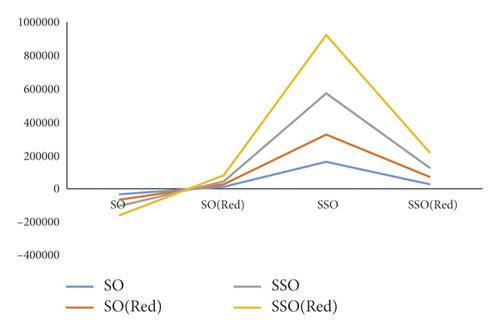
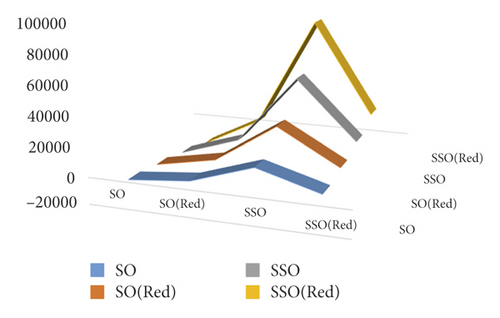
5.1. Construction
-
Step 1: Here, we create a 3D grid M(s, q, r), that is defined by a Cartesian product of the paths Ps□Pt□Pr. The atoms of rhenium are displayed by such vertices.
-
Step 2: In this phase, partition each of the M(s, t, r) edges. The new vertices correspond to oxygen atoms. The vertices of RO will now be marked (s, t, r). The identical 3D-grid mark will be applied to the corners and rhenium atoms. Between two rhenium atoms (x′, y′, z′) and (x′′, y′′, z′′), the oxygen atom will receive the label (x, y, z), where x = (x′ + x′′/2), y = (y′ + y′′/2) and z = (z′ + z′′/2). Two vertices (l′, m′, n′) and (l′′, m′′, n′′) are adjacent if |(l′ − l′′) + (m′ − m′′) + (n′ − n′′)| = 1/2. The number of vertices and edges in RO(s, t, r) are 4str—st—tr—sr and 6str-2st—2tr—2sr, respectively. The graph of rhenium trioxide RO is denoted by the letter G throughout this section (s, t, r). The degree for every corner can correspond to the set {2,3,4,5,6} as a result of the formation of RO(s, t, r).
Theorem 7. SO and SOred indices for the rhenium trioxide lattice are as follows:
- (i)
SO(G) = −0.1506 + 7.9369(s + t + r) − 22.043(st + tr + sr) − 37.9473str
- (ii)
SOred(G) = 0.1064 + 8.0488(s + t) + 8.6788r − 19.9572(st + tr + sr) + 30.5941str
Proof. From the edge partitioning of the rhenium trioxide lattice given in Table 7, we have the following computations for SO and SOred indices:
| ϕ | Frequency | |
|---|---|---|
| ϕ1 | ϕ(2,3) | 24 |
| ϕ2 | ϕ(2,4) | 16(s + t + r − 6) |
| ϕ3 | ϕ(2,5) | 10(st + tr + sr − 4s − 4t − 4r + 12) |
| ϕ4 | ϕ(2,6) | 6(str − 2st − 2tr − 2sr + 4s + 4t + 4r − 8) |
Theorem 8. SSO and SSOred indices for the rhenium trioxide lattice are as follows:
- (i)
SSO(G) = 255.2827 + 152.9129s + 45.286(t + r) − 94.7185(st + tr + sr) + 305.4699str
- (ii)
SSOred(G) = −356.6413 + 141.6272(s + t + r) − 89.0583(st + tr + sr) + 93.3381str
Proof. From the edge partitioning of the rhenium trioxide lattice given in Table 8, we have the following computations for SSO and SSOred indices:
| ϕ | Frequency | |
|---|---|---|
| ϕ1 | ϕ(6,7) | 24 |
| ϕ2 | ϕ(7,8) | 24 |
| ϕ3 | ϕ(8,8) | 8(s + t + r − 9) |
| ϕ4 | ϕ(8,9) | 8(s + t + r − 6) |
| ϕ5 | ϕ(9,10) | 8(s + t + r − 6) |
| ϕ6 | ϕ(10,10) | 8(st + tr + sr − 5p − 5t − 5r + 18) |
| ϕ7 | ϕ(10,11) | 2(st + tr + sr − 4s − 4t − 4r + 12) |
| ϕ8 | ϕ(12,12) | 2(3str − 7st − 7tr − 7sr + 16s + 16t + 16r − 36) |
6. Conclusion
Various tools of mathematics are used to predict different properties of chemical compounds such as the topological index. We can associate a single number with a molecular graph of a chemical complex using the topological index. For the characterization of the unambiguous graph theoretical system of biological concern, we have appropriated various degree-based indices. We employed the Sombor index (SO), which has chemical relevance in determining numerous physicochemical properties of octane isomers since it has a coefficient of correlation near to one in the field of mathematical chemistry. Drugs and other chemical substances are frequently shown as polygonal shapes, trees, graphs, and other geometrical shapes. In this paper, we discuss the newly introduced Sombor index, Super Sombor index, and its reduced version for specific networks. These networks include triangular mesh, enhanced mesh, rhenium trioxide lattice, and star of silicate network. We also give a graphical comparison of computed results for the abovementioned chemical network. For these groups of chemical networks, the analytical closed formulae are derived.
Conflicts of Interest
The authors declare that they have no conflicts of interest.
Authors’ Contributions
All authors contributed equally to this paper.
Open Research
Data Availability
All data required for this paper are included within this paper.



